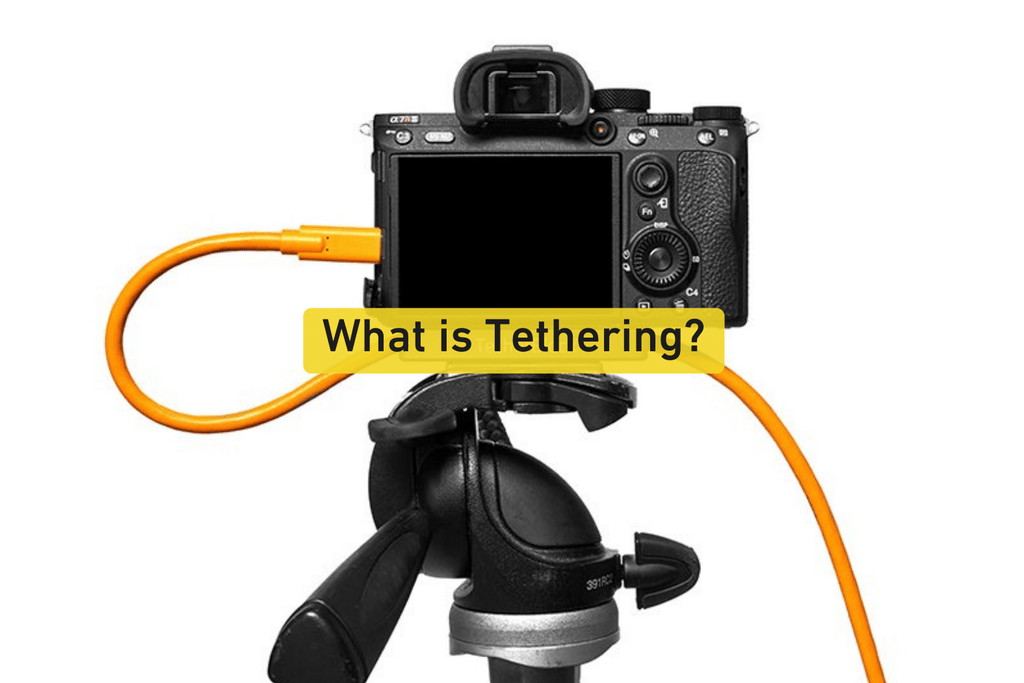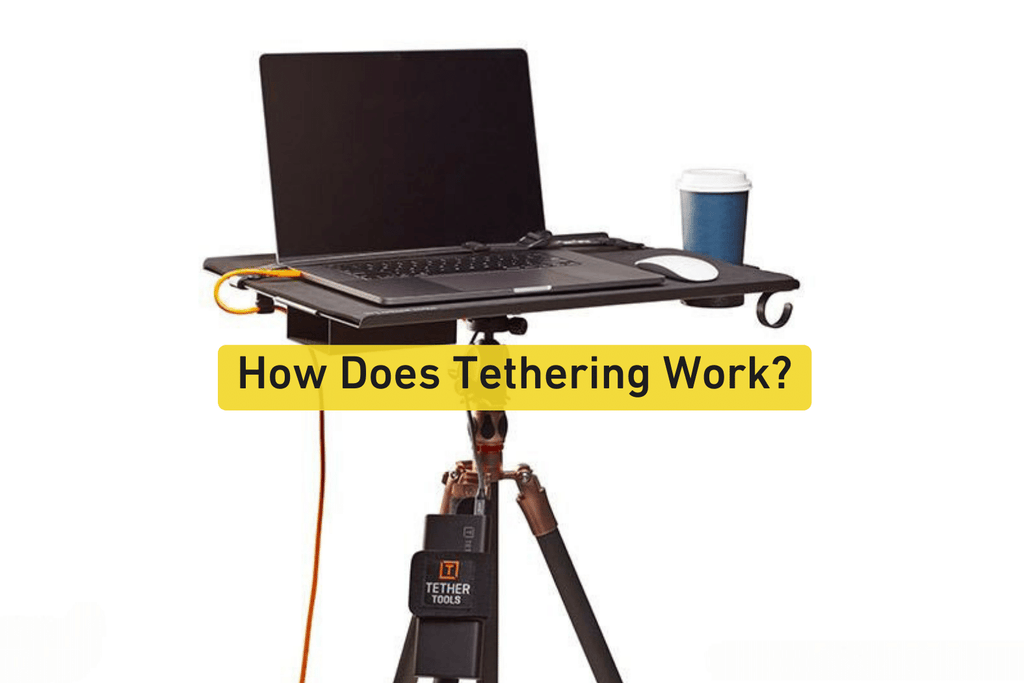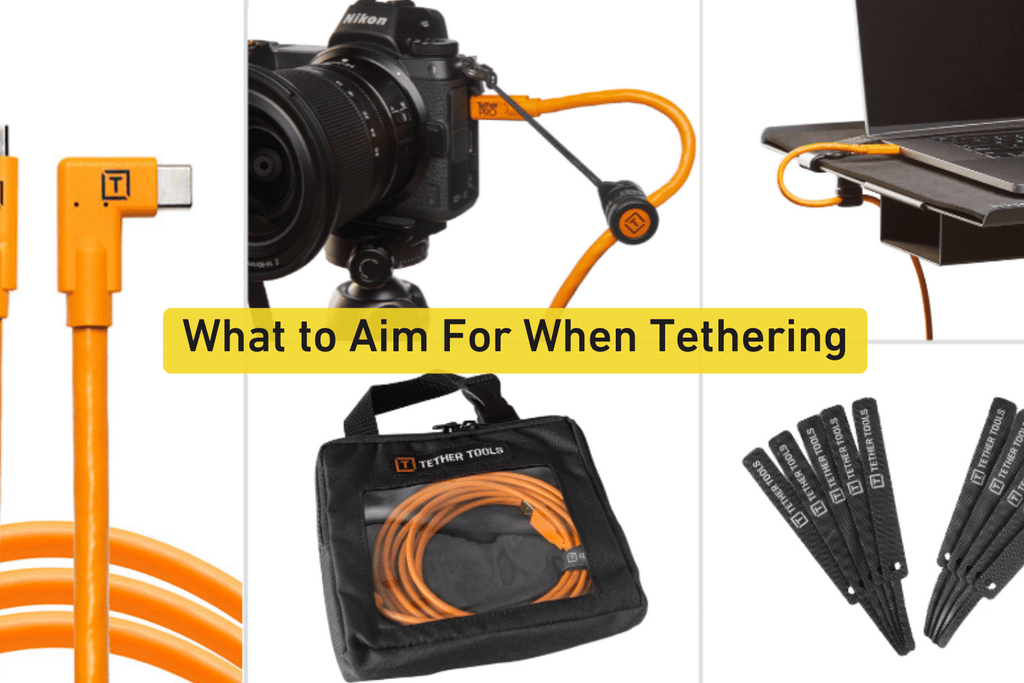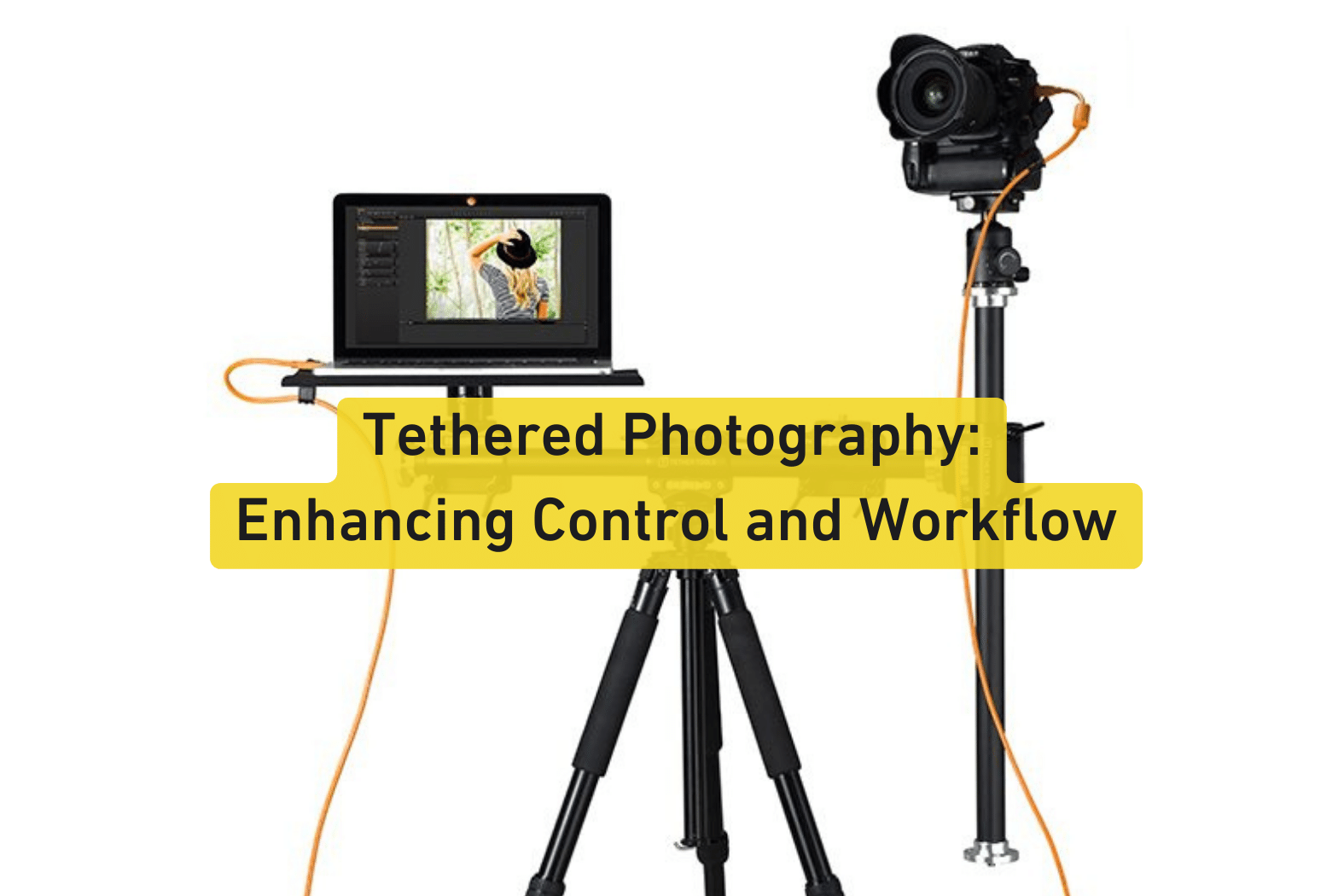Welcome to the big-bad-voodoo daddy in photography known as tethering – the thing that the outsider would assume is only for the super professionals of this field. But tethering can be yours, too!
There's a pretty neat/cool trick in photography called "tethering," which can help you improve at taking pictures more streamlined and professionally. Tethering might seem like a big, fancy word or something only studio pros do. Still, it's just a way to connect your camera to a computer… or some other third device of your choosing. Tethering can help you see your photos on a bigger screen very quickly while the action is still happening, so you can make adjustments and take even better pictures immediately.
Tethering might seem like a big, fancy word or something only studio pros do. Still, it's just a way to connect your camera to a computer… or some other third device of your choosing.
Let's discuss tethering in more detail and list critical things you need to know before plugging in.

What is Tethering?
Tethering means hooking up your camera to a computer, tablet, or phone using a cable or without one – now that wireless tethering is possible. This process lets you immediately see your pictures on a much larger screen instead of just on your camera's little screen. It's kind of like having a giant preview of your photos while you're taking them!
Tether Tools stands out as one of the leading companies in the tethering industry, renowned for their extensive range of high-quality accessories.

How Does Tethering Work?
Connecting your camera to another piece of gear, like a computer or tablet, is like connecting two brains. They talk to each other via special software, sending pictures from the small screen on the back of your camera to the bigger screen of your laptop or desktop computer.
The first thing you need to know is that you can control your camera settings from your device. It's like having a remote control for your camera and making connectivity a fast and reliable aspect of your photo session. You can also change brightness, focus, and color settings without touching your camera. Did I mention that tethering was neat? I did.
And as if there couldn't be any more benefits, another awesome one is that you get to see your photos immediately. Bang! Instead of squinting at the tiny screen on your camera, you can see your pictures nice and big, scrutinizing them for details that would otherwise be missed. This makes it easier to spot any mistakes or make changes if you need to.

What Does Tethering Do?
Tethering, which is like linking your camera to another device, can do a bunch of cool things to help out photographers:
Quick Look
When you tether, you can immediately see your pictures after snapping them. This means you can catch any oopsies and improve things on the spot!
Perfect Pictures
Looking at your photos on a bigger screen helps you see if they're correct regarding setup, focus, and lighting. It's like having a bigger-picture window to check everything before moving on.
Teamwork
Tethering is excellent for teamwork. If you're working with others, like models or clients, they can see the pictures as you take them. This helps everyone chat and work together to get the best shots.
Safekeeping
Some tethering programs also automatically save your photos on your computer while shooting. Now, if something happens to your camera's memory card – like it gets corrupted – you've got a backup.

How Tethering Helps Your Photo Goals
Now that you've got the scoop on tethering and how it rolls, let's chat about how it can turbocharge your photography dreams:
Getting Better
Tethering is like having a superpower that lets you immediately see your photos. That means you can spot what needs work and get better at taking pictures faster than ever!
Showing Off
Using tethering when taking photos shows you're serious about your craft. It's like dressing up fancy for a special occasion—impresses people. It can also open doors to even more excellent gigs down the road.
Making the Decisions
Tethering keeps you in the decision-making center of your photoshoot. You will always rely on something other than the camera alone. You can study your pictures as you snap them, so you can get creative and try out new things without worrying that you haven't already gotten what you came for. Knowing you have great pictures in the bank opens up the possibility for experimentation.
Saving Time
Tethering isn't just a hoot; it's also brilliant because it removes the guesswork. It helps you organize your photos quickly, so you spend less time sorting through a big mess of images later.

What to Aim For When Tethering
When you're linking up your camera for tethering, there are a few tricks to keep in mind for top-notch results:
Staying Connected
Be certain your camera and device are connected securely and that your tethering software is up-to-date and running smoothly. This will help prevent any technical issues while you're taking pictures, keeping things nice and easy.
Bright Lights
It's best to take your shots in a place with good lighting. This way, you can see your photos on the screen and judge how well they're lit up.
Check the Details
Look closely at your photos on the screen. Check if they're focused, nicely framed, and not too bright or dark. It's like being a detective for your pictures!
Teamwork Time
If you're working with others, like models or clients, chat with them a lot. This way, you can all work together smoothly and get the most out of tethering during your photo session. It's like playing on a team to win the photography game!

What to Avoid When Tethering
Even though tethering can be super helpful for your photography adventures, there are a few traps to watch out for:
Not Too Reliant
Tethering is fantastic, but rely on it sparingly. You still want to trust your gut and practice your photo skills without leaning too hard on tethering.
Tech Troubles
Keep an eye out for technical hiccups, like slow connections or software glitches, and be ready to fix them if they occur!
Stay Focused
Don't get so wrapped up in tethering that you forget about the fun of taking pictures. Keep your eyes on your subjects and the Moment, not just on the screen.
Stay in the Moment
Although tethering lets you see your pics as you snap them, don't get lost on the screen. Stay connected with what's happening around you to capture real emotions and moments.

Conclusion
To summarize, tethering is like having a secret weapon for awesome photos! It's a great addition to any photo skill set and a helpful process to improve you. It helps you work faster and get shots closer to what you had in your mind's eye from the beginning.
As I've mentioned, when you connect your camera to another device – a computer, a tablet, a phone, or even a TV (with a software interface), you can see your pictures lickety-split. This allows you to tweak them as you go; no more guesswork, which helps you keep your set running smoothly.
The more tools you have at your disposal, the more creative you can be.
Remember to keep your connection strong and pay attention to the small details, but don't get tether-obsessed. Still, keep your focus on your subject and your finger on the shutter button.
Tethering can be your photography superpower with practice, helping you take amazing pictures like a pro!
Related article: Taking Control: A Guide to Aperture Priority Mode
Related article: 10 Tips for Photographing People
Related article: What is the Exposure Triangle — Aperture, ISO & Shutter Speed
Related article: The Importance of Editing Your Photos
Related article: What is Metering in Photography?
Related article: How to Shoot Portrait Photography with a Low-key Lighting Setup?












